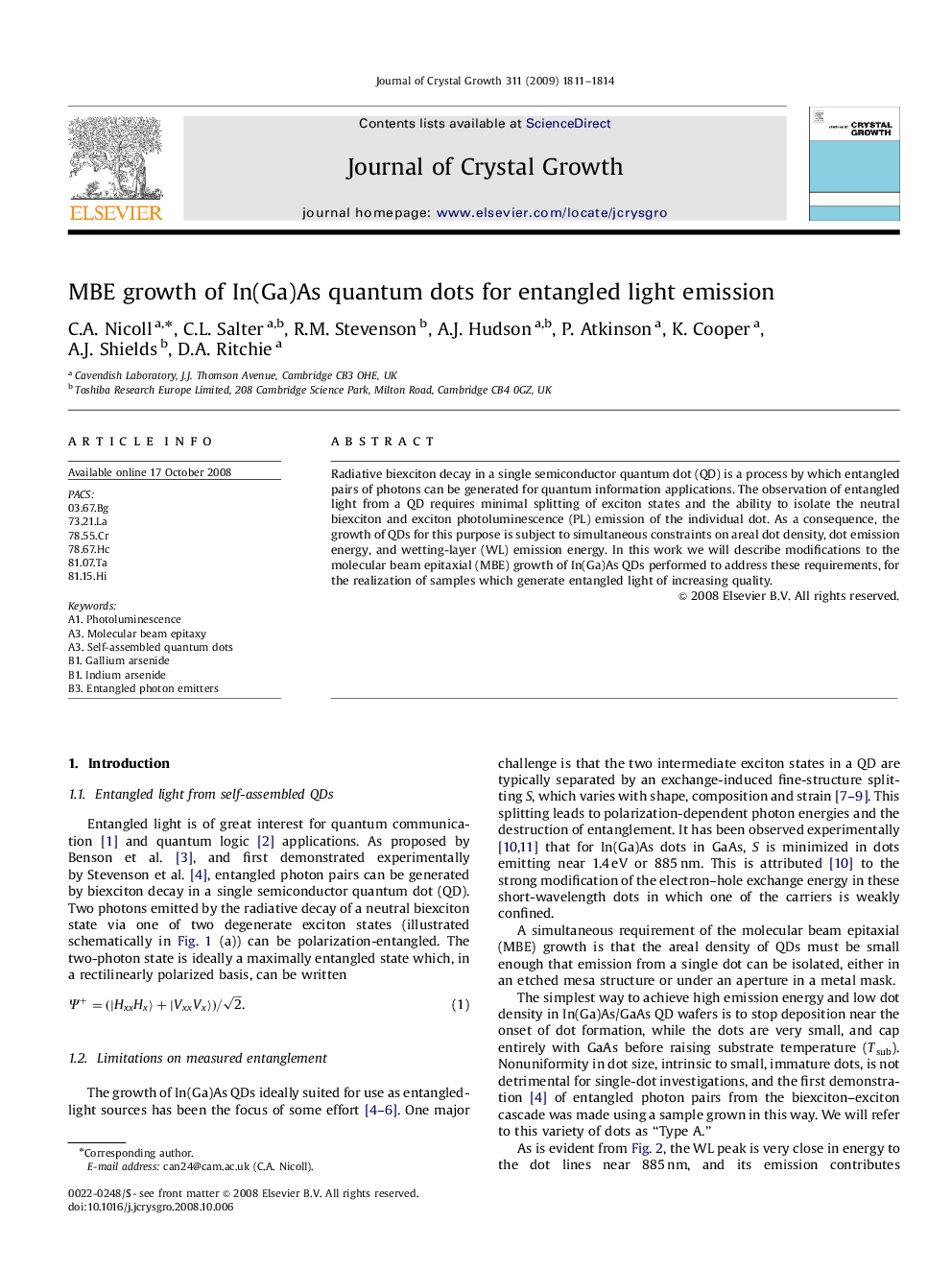| Article ID | Journal | Published Year | Pages | File Type |
|---|---|---|---|---|
| 1794229 | Journal of Crystal Growth | 2009 | 4 Pages |
Abstract
Radiative biexciton decay in a single semiconductor quantum dot (QD) is a process by which entangled pairs of photons can be generated for quantum information applications. The observation of entangled light from a QD requires minimal splitting of exciton states and the ability to isolate the neutral biexciton and exciton photoluminescence (PL) emission of the individual dot. As a consequence, the growth of QDs for this purpose is subject to simultaneous constraints on areal dot density, dot emission energy, and wetting-layer (WL) emission energy. In this work we will describe modifications to the molecular beam epitaxial (MBE) growth of In(Ga)As QDs performed to address these requirements, for the realization of samples which generate entangled light of increasing quality.
Keywords
Related Topics
Physical Sciences and Engineering
Physics and Astronomy
Condensed Matter Physics
Authors
C.A. Nicoll, C.L. Salter, R.M. Stevenson, A.J. Hudson, P. Atkinson, K. Cooper, A.J. Shields, D.A. Ritchie,
